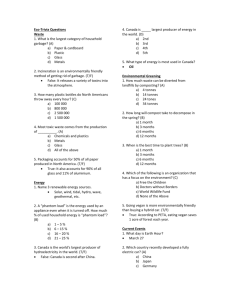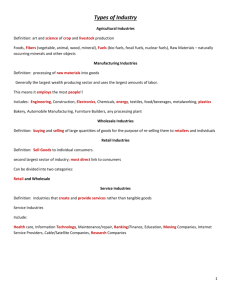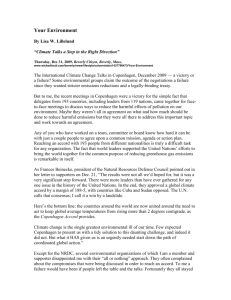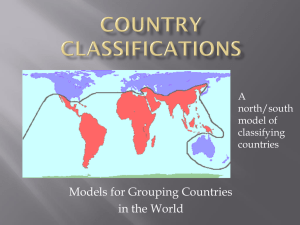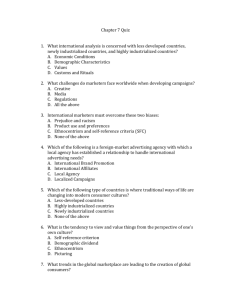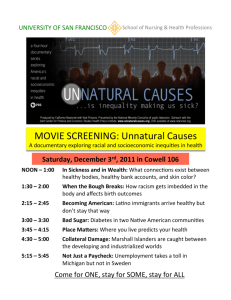BMUNC 151 DELEGATE PACK WHAT IS A MUN? Model United
advertisement
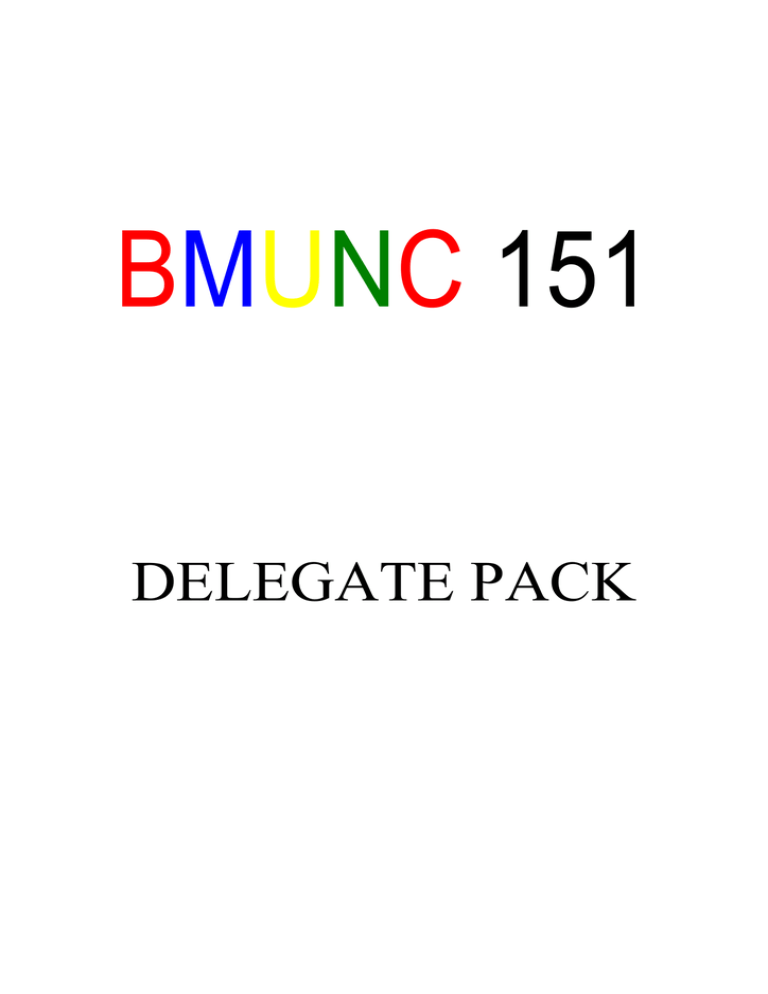
BMUNC 151 DELEGATE PACK WHAT IS A MUN? Model United Nations, also known as Model UN or MUN, is an educational simulation and academic competition in which students learn about diplomacy, international relations, and the United Nations. MUN involves and teaches research, public speaking, debating, and writing skills, in addition to critical thinking, teamwork, and leadership abilities. Participants in Model UN conferences, referred to as delegates, are placed in committees and assigned countries, or occasionally other organizations or political figures, to represent. They are presented with their assignments in advance, along with a topic that their committee will discuss. Delegates conduct research before conferences and formulate positions that they will then debate with their fellow delegates in committee. A MUN is ultimately an enjoyable way to hone your diplomacy and oratory skills. BRIEF OUTLINE OF PROCEDURE In order to maintain decorum, Model UN committees use parliamentary procedure derived from Robert's Rules of Order. Each committee usually has a chair (also known as moderator), who enforces the rules of procedure. A delegate may request the committee as a whole to perform a particular action; this is known as a motion. Documents aiming to address the issue of the committee are known as resolutions and are voted for ratification. MUN committees can be divided into three general sessions: formal debate, moderated caucus, and unmoderated caucus. In a formal debate, the staff maintains a list of speakers and the delegates follow the order written on the 'speaker list'. Speakers may be added to the speaker list by raising their placards or sending a note to the chair. During this time, delegates talk to the entire committee. They make speeches, answer questions, and debate on resolutions and amendments. In a moderated caucus, the committee goes into a recess and the rules of procedure are suspended. Anyone may speak if recognized by the chair. A vote on a motion is necessary to go into a moderated caucus. Resolutions are the basis of all debate. They are considered the final results of conversations, writings, and negotiations. Resolutions must go through a draft, approval by the chair, and consequently debate and modification arises. RULES OF PROCEDURE TOPIC ‘Intensification of efforts to reduce global environmental damage.’ 2nd General Assembly (Economic and Financial) THE 2ND GENERAL ASSEMBLY The Economic and Finance Committee (ECOFIN) is a committee within the United Nations that solves problems in the area of global finances and economics. It is one of the six standing committees of the General Assembly, and also referred to as the "Second Committee". The Second Committee makes recommendations on means to improve the economic development of Member States and maintain the stability of the international financial and trade network. The economic issues considered by the Second Committee are distinguished from those considered by the Fifth Committee in that this Committee deals solely with financing the economic assistance to Member States, whereas the Fifth Committee addresses the budgetary issues within the United Nations System. UN ENVIRONMENT PROTECTION The earth’s climate is changing because of human activity, and the rate of warming is accelerating. There is near-uniform acceptance of these facts by the scientific community, though in other circles the causes and consequences of global climate change are still disputed. For the international community, the debate over climate change dis- tills to several questions: how urgent is the situation and how quickly and to what extent should humans act to reverse or halt global climate change? Additionally, the economic implications of climate change and regulation are of major import to UN Member States. Despite many conferences and meetings, the international community has yet to negotiate a legally binding plan that a majority of states – including industrialized and developing nations – can agree upon. The most vulnerable nations include the Least Developed Countries (LDCs), the small-island developing nations and African nations. The Second Committee focuses its efforts on the economic questions and policies involved in preventing, reducing, and mitigating the effects of climate change in these regions. Both industrialized and developing nations must be involved in any agreement on climate change. While every person in the world is affected by weather, the poor are often most vulnerable to changes in climate patterns. In the industrialized world, social safety nets can buffer the impact of climate-related disasters. In contrast, in the developing world, where a majority of the population lives in poverty, there are few social safety nets to cushion any natural disaster. Water supplies have dried up in some regions, while others are impacted by violent storms that have grown in intensity in recent decades. Environmental protection has been a priority for the United Nations since its inception. However, the protection of the Earth’s atmosphere and climate has taken longer to become a priority. The first United Nations Scientific Conference was held in 1949, but the Economic and Social Council (ECOSOC) was the first United Nations body to make climate change an agenda item in 1968. At the first Earth Summit in 1972, governments were warned to be mindful of activities causing climate change, and stations were established around the world to monitor long-term climate trends. In 1985, the United Nations adopted the Vienna Convention for the Protection of the Ozone Layer and similar resolutions aimed at reducing sulfur emissions into the air by thirty percent. In 1988, the Intergovernmental Panel on Climate Change (IPCC) was formed to assess the scientific knowledge on global warming, and it later concluded that there was a broad international consensus that climate change was induced by human activity. In 1992 the Earth Summit produced the United Nations Framework Convention on Climate Change (UNFCCC) as a step towards action to stabilize climate trends. In 1997, the Kyoto Protocol to the UNFCCC – the most influential climate change legislation at that point – was adopted. The Kyoto Protocol set emission reduction targets for industrialized countries. It has resulted in the stabilization of emissions in some countries, but overall was not successful in significantly reducing emissions in industrialized countries. While the Kyoto Protocol has been the only binding piece of work that the nations have been able to agree on, not every Member State signed on. A few influential industrialized nations protested that Kyoto put too great a burden on industrialized countries to reduce their national emission levels. Some industrialized nations viewed Kyoto as disadvantaging their own national economies while placing too little responsibility on developing nations. The question of the right to industrialize is an important one; the economic impact and costs of climate change and industrial regulation are high, especially for developing nations. Despite the Kyoto Protocol, emission rates have continued to rise in aggregate, while decreasing within some Member States. In December 2009, Member States met in Copenhagen to design the Copenhagen Accord – a framework for fighting against global warming – and devised a double-track plan which set targets for both industrialized and developing nations. Governments that signed the Copenhagen Accord agreed to make deep cuts in their emission rates as soon as possible, but many developing nations wanted the richer, industrialized nations to make much greater cuts in their emission rates than promised. Under the terms of the Copenhagen Accord, the fulfillment of states’ pledges will be reviewed. The Accord also calls for a slowing in deforestation and an increase in international aid, and it establishes a Copenhagen Green Climate Fund to channel aid and accelerate the use of green technologies. While the Copenhagen Accord is not likely to be as effective as most nations would desire, it has propelled the international community into negotiations for a better version of the Kyoto Protocol, which would be binding on all Member States and would build on the cooperation of the Copenhagen Accord. The United Nations continues to focus on a strengthened international commitment to fighting global warming while simultaneously pursuing an agenda for sustainable development for developing nations. Throughout 2010 the UNFCCC will spearhead international negotiations on climate change ahead of the 16th Conference of the Parties (COP16) in Cancun in December 2010. A recent document by the Second Committee (A/C.2/64/SR.29) states that there is wide support for the UN taking an active role in combating climate change in order to achieve a successful conclusion to ongoing negotiations. Member States generally agreed that change, that greenhouse gas emissions would have to be reduced, and that the global community should take steps to improve recovery and resilience. They further enumerated linkages between climate change and other problems, including poverty, food security, water resources, land degradation, soil erosion and the reduction of biodiversity. Member States recognized, however, that these measures would be costly. They concluded that industrialized nations, which were historically responsible for climate change, must be involved in providing financial and technical assistance. In bringing this matter to the attention of the Committee, representatives from both developing and developed nations have been key voices, emphasizing not only global initiatives, but also the importance of regional organizations. Climate change is a global problem that has pronounced local effects, and resolving such issues will take coordinated national, transnational, and international efforts that address the specific concerns of individual countries and regional blocs. Significant hurdles remain. There are still significant disagreement about the specifics of how to measure emissions outputs and their contributions to climate change. The issue of cost and financing has been a major hurdle in working toward international solutions to the climate change problem. Furthermore, countries disagree about the extent to which the Copenhagen Accord should be used as a basis for future negotiations.
